Related Research Articles
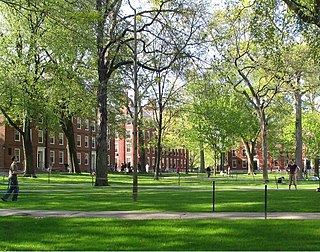
Harvard Yard, in Cambridge, Massachusetts, is the oldest part of the Harvard University campus, its historic center and modern crossroads. It contains most of the freshman dormitories, Harvard's most important libraries, Memorial Church, several classroom and departmental buildings, and the offices of senior University officials including the President of Harvard University.

Benjamin C. Thompson was an American architect. He was one of eight architects who founded The Architects' Collaborative (TAC) in 1945 in Cambridge, Massachusetts, one of the most notable firms in post-war modernism, and then started his own firm, Benjamin Thompson and Associates (BTA), in 1967.
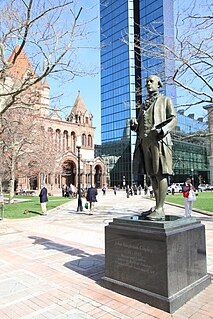
Copley Square, named for painter John Singleton Copley, is a public square in Boston's Back Bay neighborhood, bounded by Boylston Street, Clarendon Street, St. James Avenue, and Dartmouth Street. Prior to 1883 it was known as Art Square due to its many cultural institutions, some of which remain today. It was proposed as a Boston Landmark.

The Harvard University Science Center is Harvard's main classroom and laboratory building for undergraduate science and mathematics, in addition to housing numerous other facilities and services. Located just north of Harvard Yard, the Science Center was built in 1972 and opened in 1973 after a design by Josep Lluís Sert.

Southworth & Hawes was an early photographic firm in Boston, 1843–1863. Its partners, Albert Sands Southworth (1811–1894) and Josiah Johnson Hawes (1808–1901), have been hailed as the first great American masters of photography, whose work elevated photographic portraits to the level of fine art. Their images are prominent in every major book and collection of early American photography.

Morrill Wyman was an American physician and social reformer. Best known today for his work on hay fever, he was one of the most respected doctors of his time, a social reformer, Harvard overseer, hospital president, and author in his long lifetime.
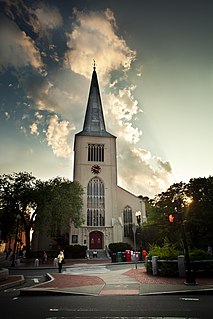
First Parish in Cambridge is a Unitarian Universalist church, located in Harvard Square in Cambridge, Massachusetts. It is a Welcoming Congregation and a member of the Unitarian Universalist Association. The church is notable for its almost 400-year history, which includes pivotal roles in the development of the early Massachusetts government, the creation of Harvard College, and the refinement of current liberal religious thought.
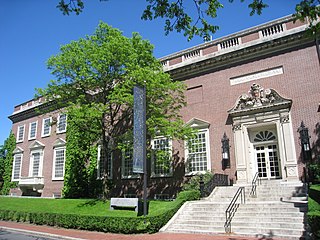
The Harvard Art Museums are part of Harvard University and comprise three museums: the Archaeological Exploration of Sardis, the Fogg Museum, the Busch-Reisinger Museum, and the Arthur M. Sackler Museum and four research centers: the Center for the Technical Study of Modern Art, the Harvard Art Museums Archives, and the Straus Center for Conservation and Technical Studies. The three museums that constitute the Harvard Art Museums were initially integrated into a single institution under the name Harvard University Art Museums in 1983. The word "University" was dropped from the institutional name in 2008.

Jeffries Wyman was an American naturalist and anatomist, born in Chelmsford, Massachusetts. Wyman died in Bethlehem, New Hampshire of a pulmonary hemorrhage.
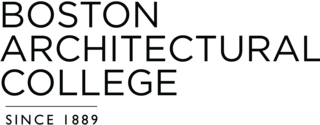
Boston Architectural College, also known as The BAC, is New England's largest private college of spatial design. It offers first-professional bachelor's and master's degrees in architecture, interior architecture, landscape architecture, and non-professional design studies including real estate development and historic preservation. The college offers continuing education credits and certificates and also hosts the BAC Summer Academy for high school students, as well as a variety of other ways for the general public to explore spatial design. It hosts spatial design exhibits and exhibits student and alumni work in its McCormick Gallery and frequently hosts conferences and symposia on spatial design.

The Boston Society of Natural History (1830–1948) in Boston, Massachusetts, was an organization dedicated to the study and promotion of natural history. It published a scholarly journal and established a museum. In its first few decades, the society occupied several successive locations in Boston's Financial District, including Pearl Street, Tremont Street and Mason Street. In 1864 it moved into a newly constructed museum building at 234 Berkeley Street in the Back Bay, designed by architect William Gibbons Preston. In 1951 the society evolved into the Museum of Science, and relocated to its current site on the Charles River.

The Harvard Museum of Natural History is a natural history museum housed in the University Museum Building, located on the campus of Harvard University in Cambridge, Massachusetts.

The Harvard University Herbaria and Botanical Museum are institutions located on the grounds of Harvard University at 22 Divinity Avenue, Cambridge, Massachusetts. The Botanical Museum is one of three which comprise the Harvard Museum of Natural History.

Memorial Hall, immediately north of Harvard Yard in Cambridge, Massachusetts, is an imposing High Victorian Gothic building honoring Harvard men's sacrifices in defense of the Union during the American Civil War—"a symbol of Boston's commitment to the Unionist cause and the abolitionist movement in America."

Lamont Library, in the southeast corner of Harvard Yard in Cambridge, Massachusetts, houses the Harvard College Library's primary undergraduate collection in humanities and social sciences. It was the first library in the United States specifically planned to serve undergraduates. Women were admitted beginning in 1967.

California Hall is one of the original "classical core" Beaux-Arts-style Classical Revival buildings on the UC Berkeley campus. Construction began in 1903 under the lead of University Architect John Galen Howard after the university's adoption of the Phoebe Hearst master architectural plan for the Berkeley campus. The building opened in August, 1905. In 1982, it was named to the National Register of Historic Places, and is designated as an architectural feature of California Historic Landmark no. 946. In 1991, the Landmarks Preservation Committee of the City of Berkeley designated it Berkeley City Landmark no. 147. It currently houses the University of California Berkeley Chancellor's Office and the Graduate Division.
Fay House is a Federal style mansion in Cambridge, Massachusetts that currently serves as the main administrative building of the Radcliffe Institute for Advanced Study at Harvard University.

Harvard Hall is a Harvard University classroom building in Harvard Yard, Cambridge, Massachusetts.
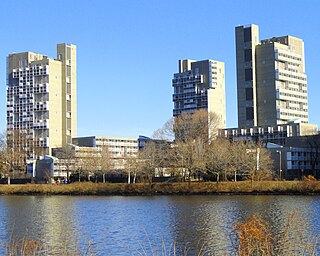
Peabody Terrace, on the north bank of the Charles River in Cambridge, Massachusetts, is a Harvard University housing complex primarily serving graduate students, particularly married students and their families. Designed in the brutalist style and constructed in 1964, its three-story perimeter grows to five and seven stories within, with three interior 22-story towers.
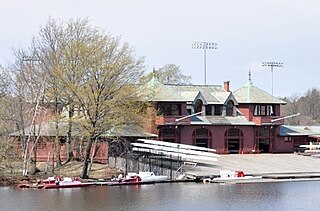
Newell Boathouse, named for a popular Harvard athlete killed just a few years after graduation, is the primary boathouse used by Harvard University's varsity men's rowing teams. It stands on land subject to an unusual peppercorn lease agreement between Harvard and the Commonwealth of Massachusetts.
References
- ↑ Bainbridge Bunting, Harvard: An Architectural History, Harvard University Press, 1998, ISBN 0674372913, p. 49
- 1 2 Harvard Property Information Resource Center, Boylston Hall
- ↑ Thomas Hooker: Writings in England and Holland, 1626-1633, (Cambridge, MA : Harvard Univ. Press, 1975), p. 35.
- ↑ Appel, Toby A. "A Scientific Career in the Age of Character: Jeffries Wyman and Natural History at Harvard" in Science at harvard University, Historical perspectives edited by Clark A. Elliot and Margaret W. Rossiter 1992, pp. 105-106.
- ↑ Dennis J. De Witt, Benjamin Thompson & Associates, 1990, p. 38
- ↑ Interiors136:72
- ↑ AIA, Architecture81:17 (1992)
- ↑ "Boylston Hall 110 - Fong Auditorium".
Coordinates: 42°22′24″N71°07′02″W / 42.373332°N 71.117327°W
| Wikimedia Commons has media related to Boylston Hall (Cambridge, Massachusetts) . |